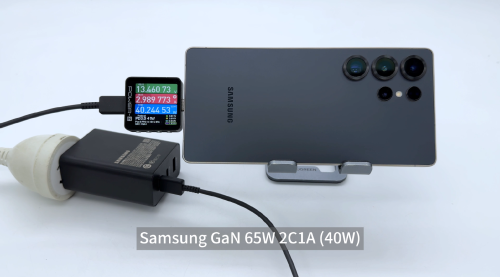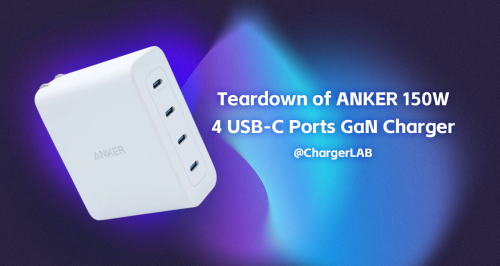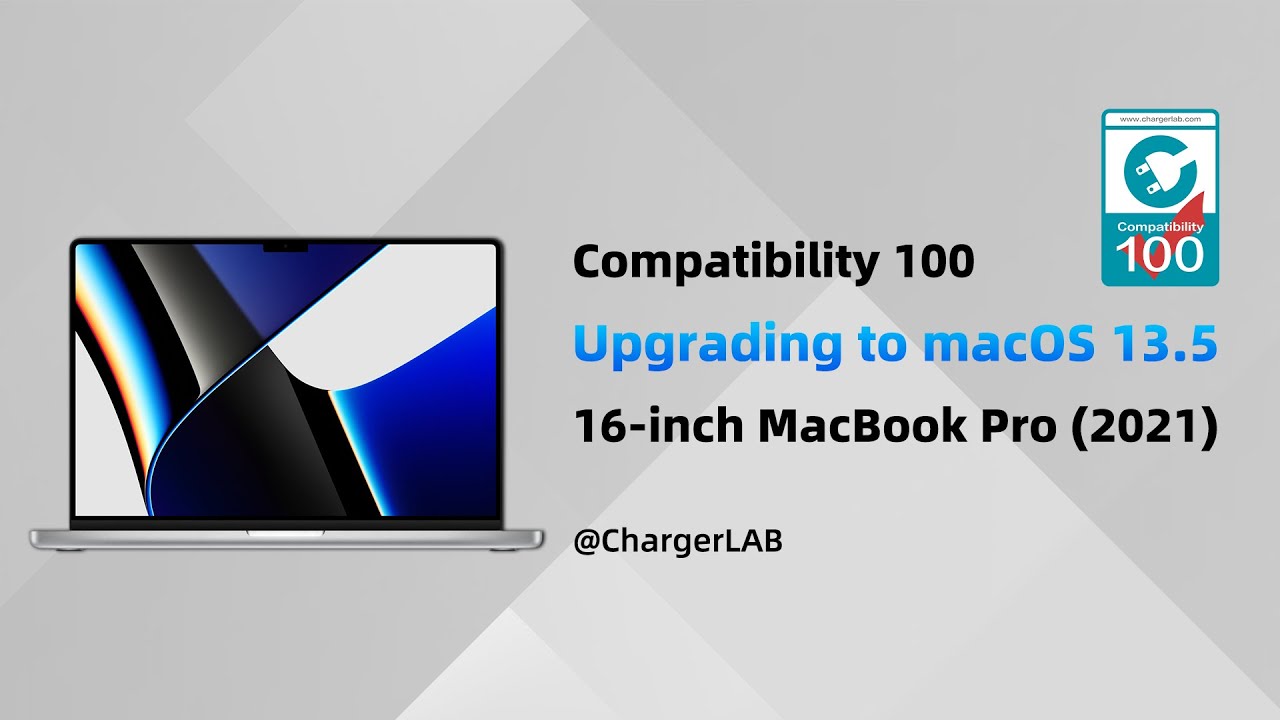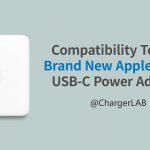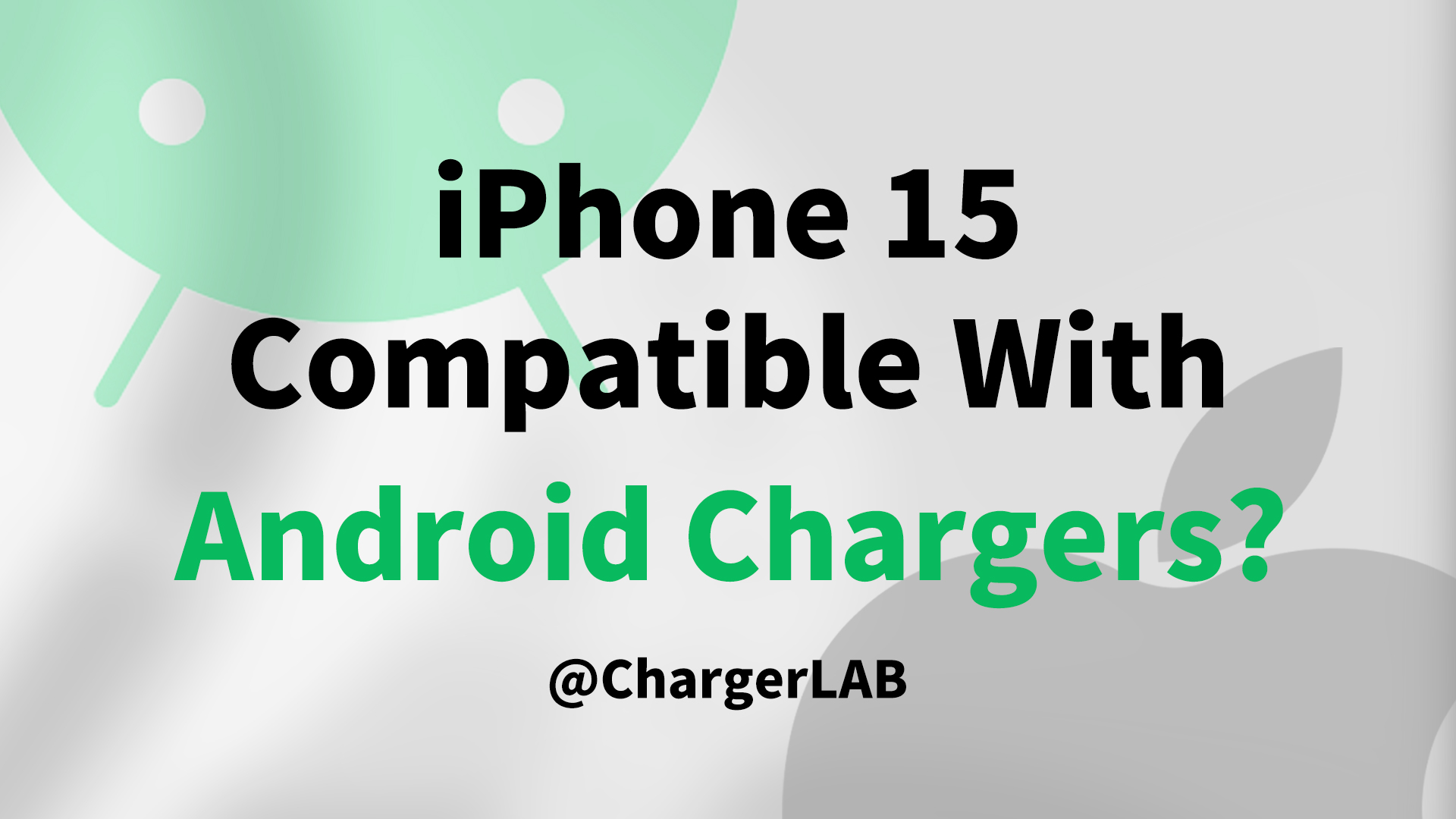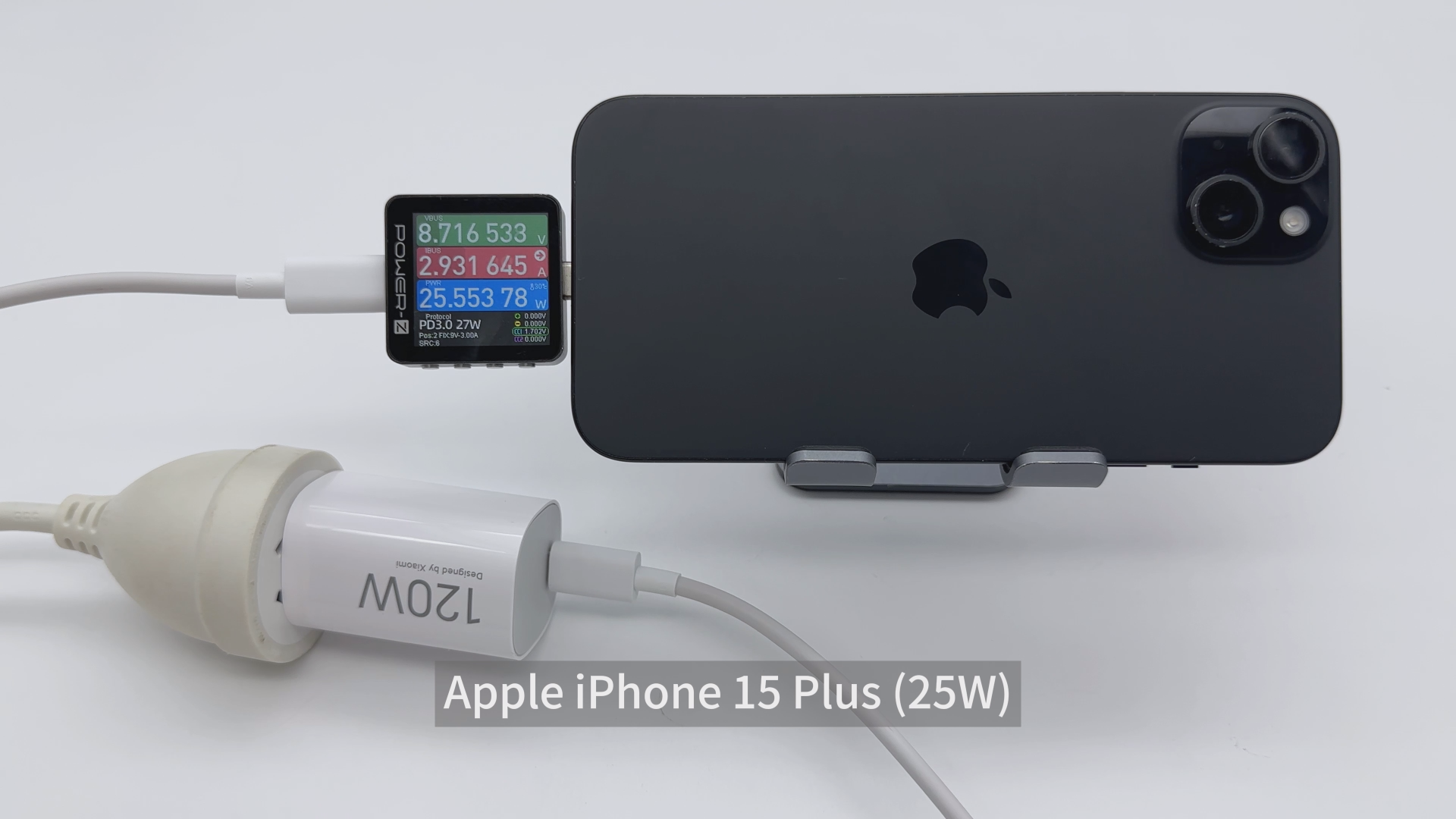Introduction
The latest Samsung Galaxy S25 Ultra comes equipped with a 5000mAh battery, supporting 45W wired fast charging and 15W wireless charging. It also features an IP68 dust and water resistance rating, along with a range of AI-powered features. Let's take a look at how well this smartphone is compatible with original chargers, third-party chargers, and power banks.
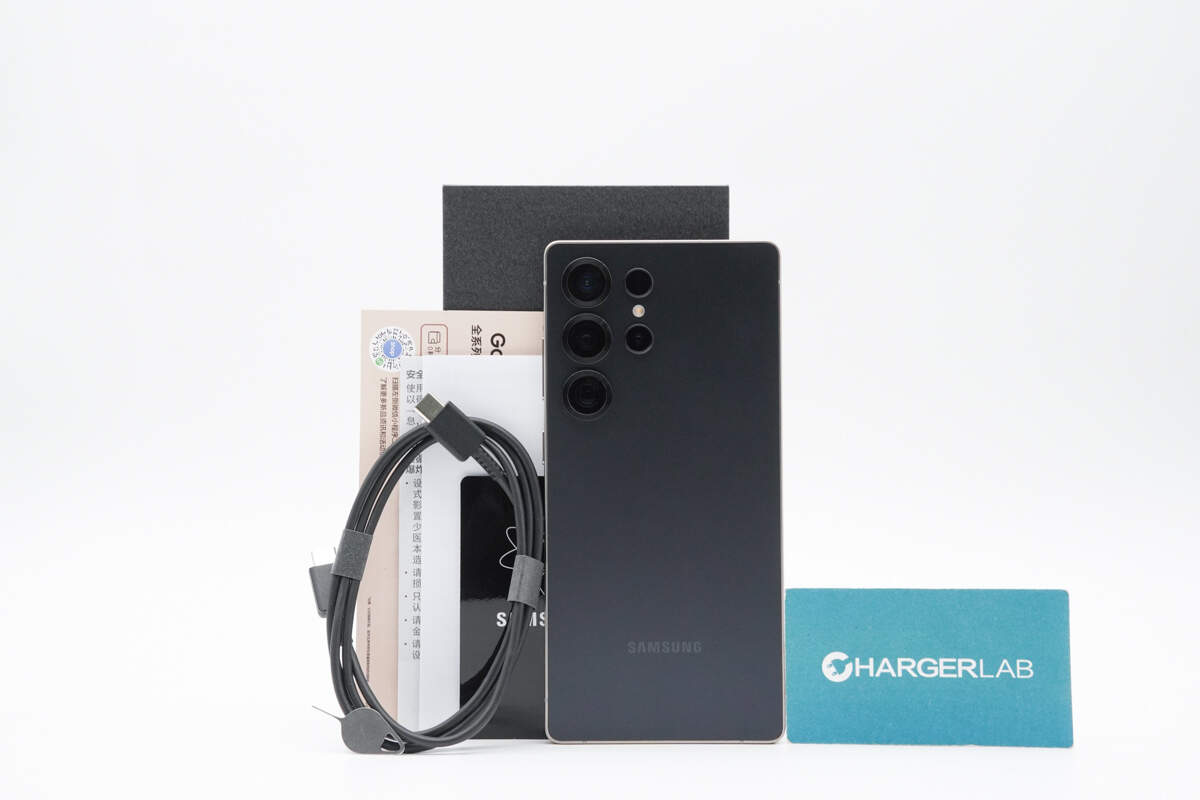
Charging Compatibility Test
Original Chargers
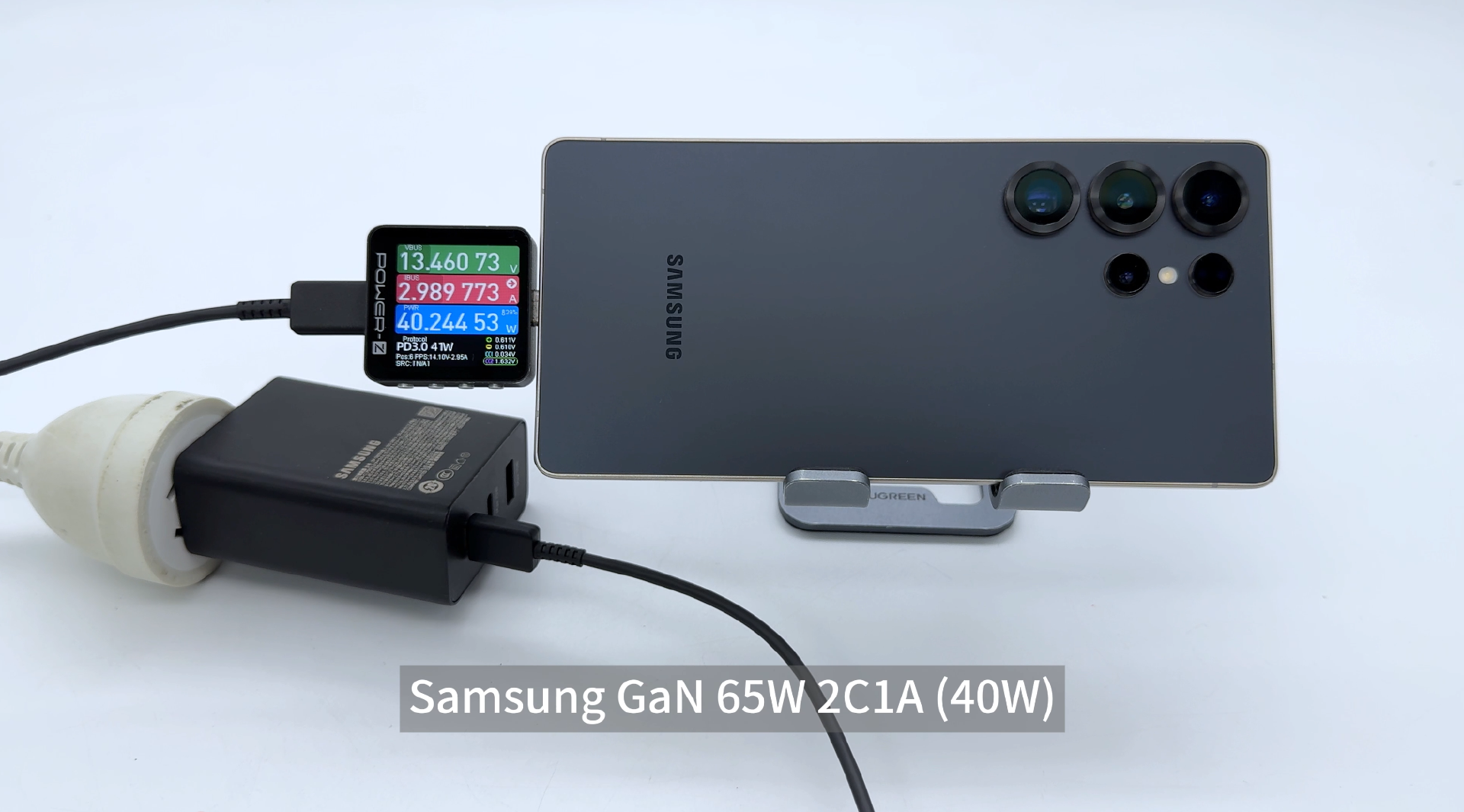
First, using Samsung’s 65W three-port charger with the original 3A cable, the ChargerLAB POWER-Z KM003C measured an input power of 13.46V 2.99A 40.24W.
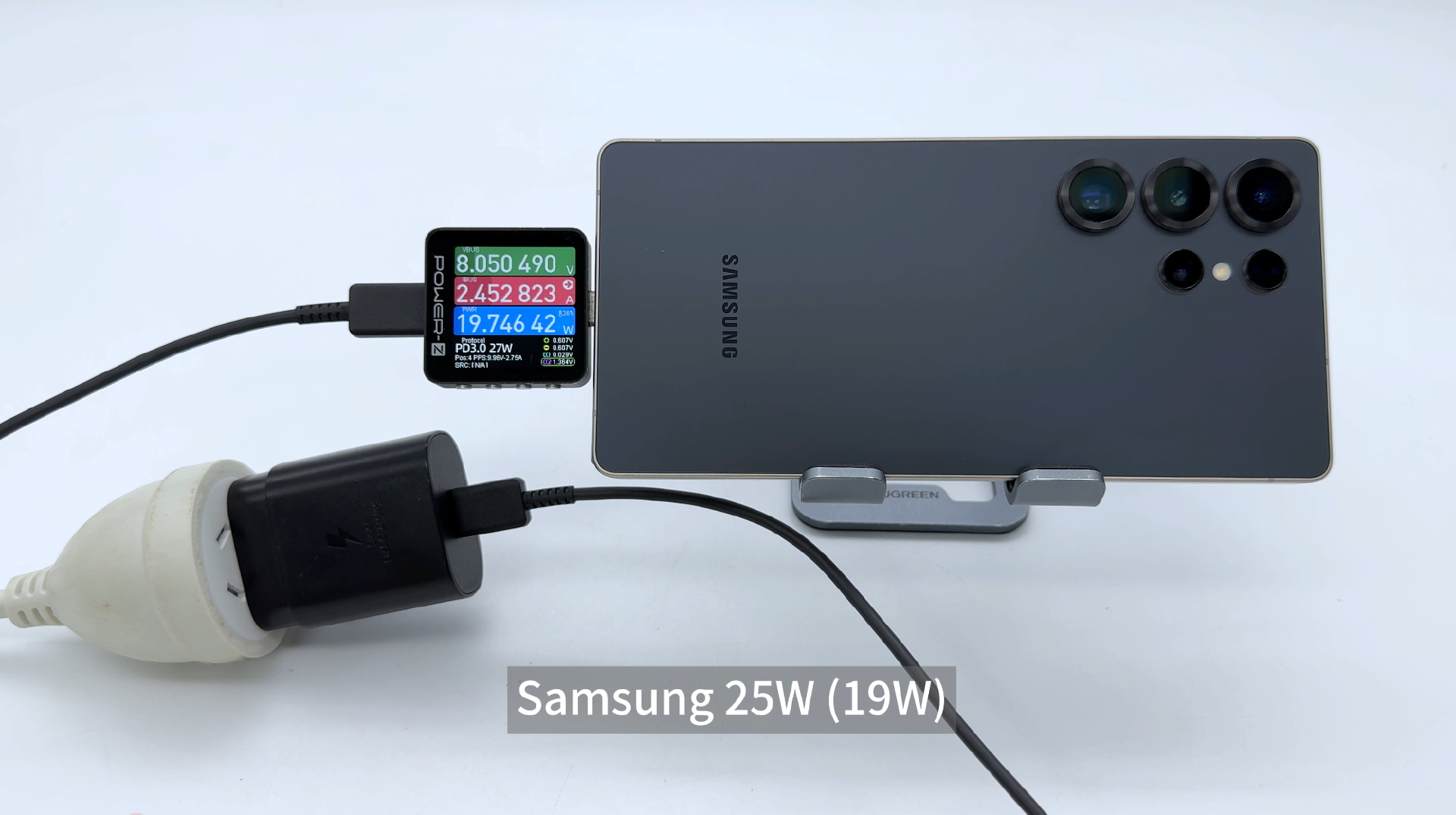
Next, testing with the Samsung 25W charger, the input power dropped to 8.05V 2.45A 19.75W.
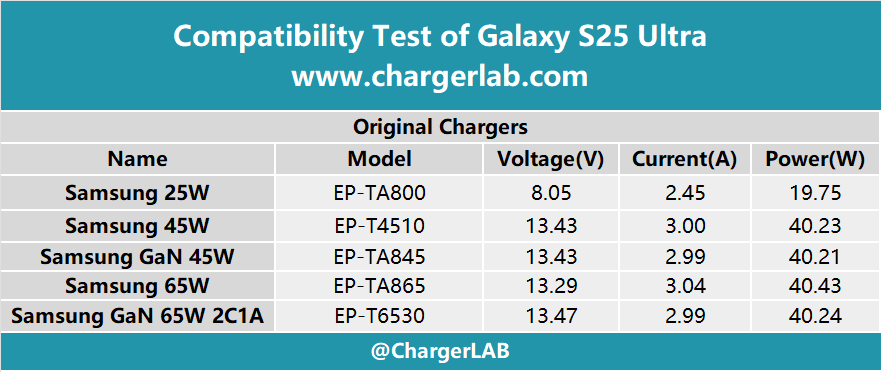
We tested all of Samsung’s own chargers one by one, using the original 3A Dual USB-C cable. The highest voltage measured was 13V. Except for the 25W charger, which has a power limit, all other original chargers delivered over 40W.
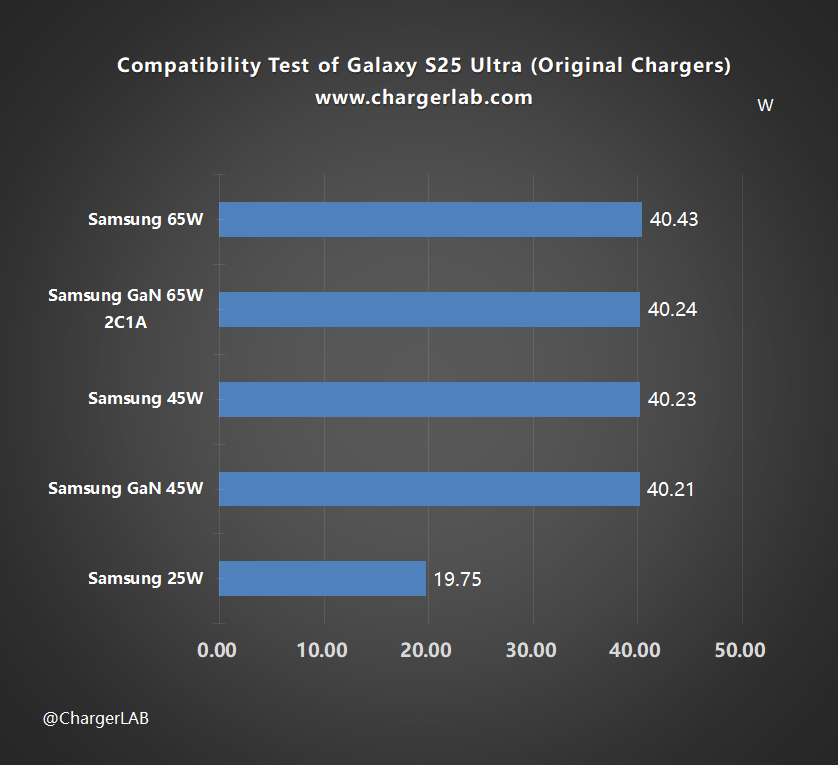
The bar chart clearly shows the charging power of each charger. Overall, the original chargers performed well. Chargers rated at 45W or higher consistently reached around 40W, while the 25W charger still managed to deliver close to 20W.
Third-party Chargers
Sometimes, when forgetting to bring the original charger, users may have to rely on third-party chargers. Let's examine the compatibility of third-party chargers when used with the original charging cable.
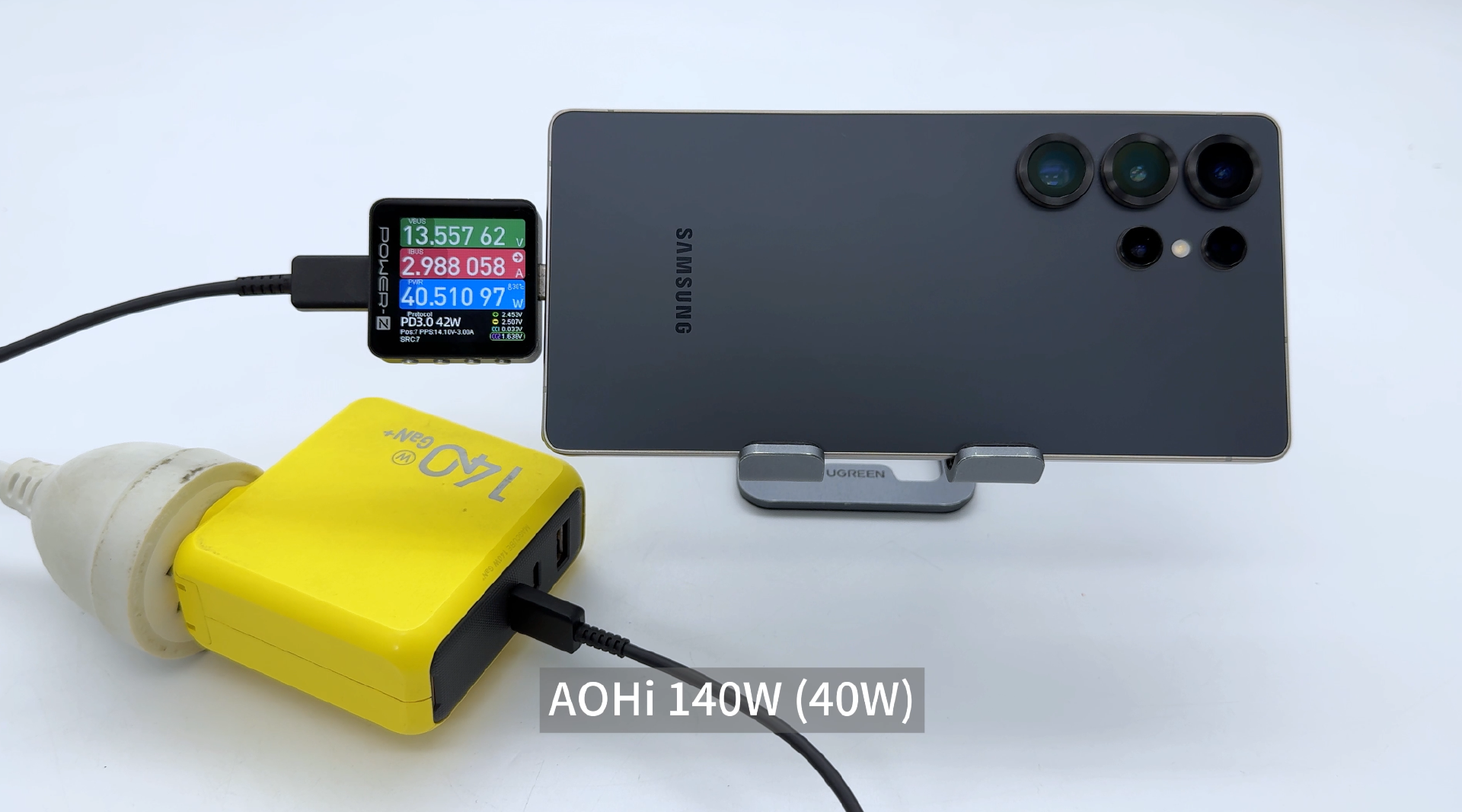
Using the AOHi 140W charger to power the Samsung S25 Ultra, the input power measured 13.56V 2.99A 40.51W.
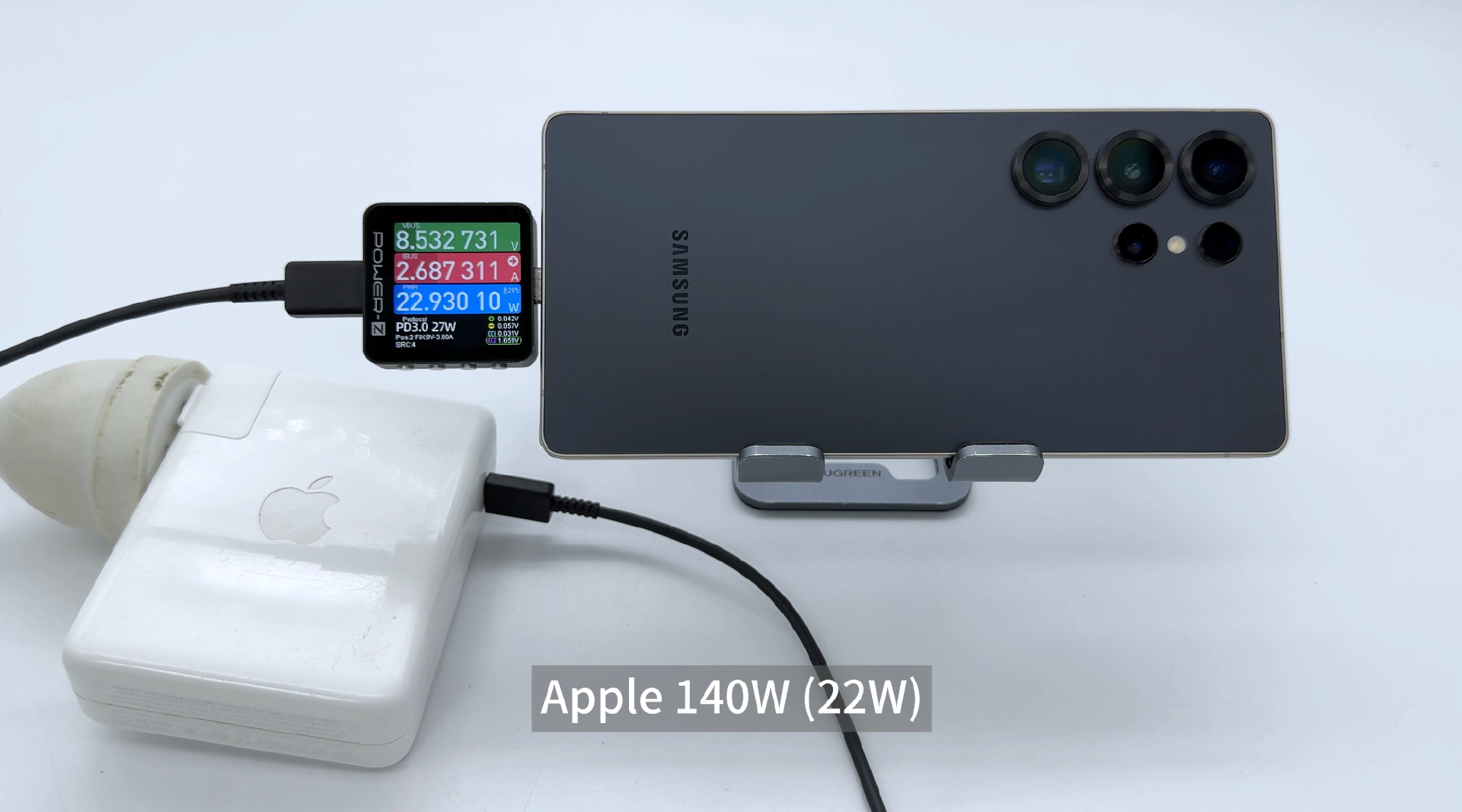
However, despite having a similar power rating, Apple's 140W charger only delivered 8.53V 2.69A 22.93W.
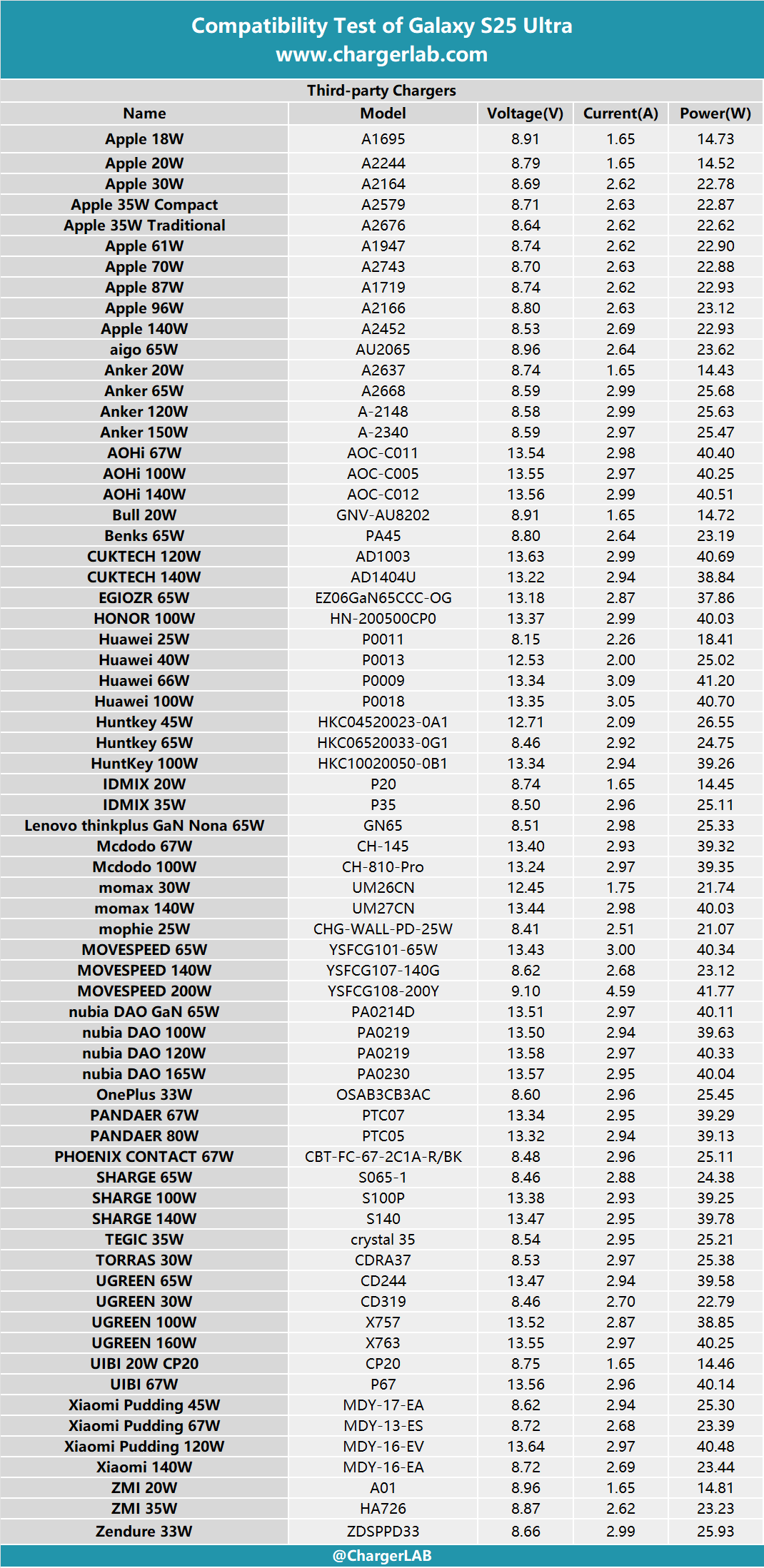
After compiling the final test results into a table, we observed that most third-party chargers triggered a voltage of around 9V or 13-14V, with power output ranging between 14W and 41W.
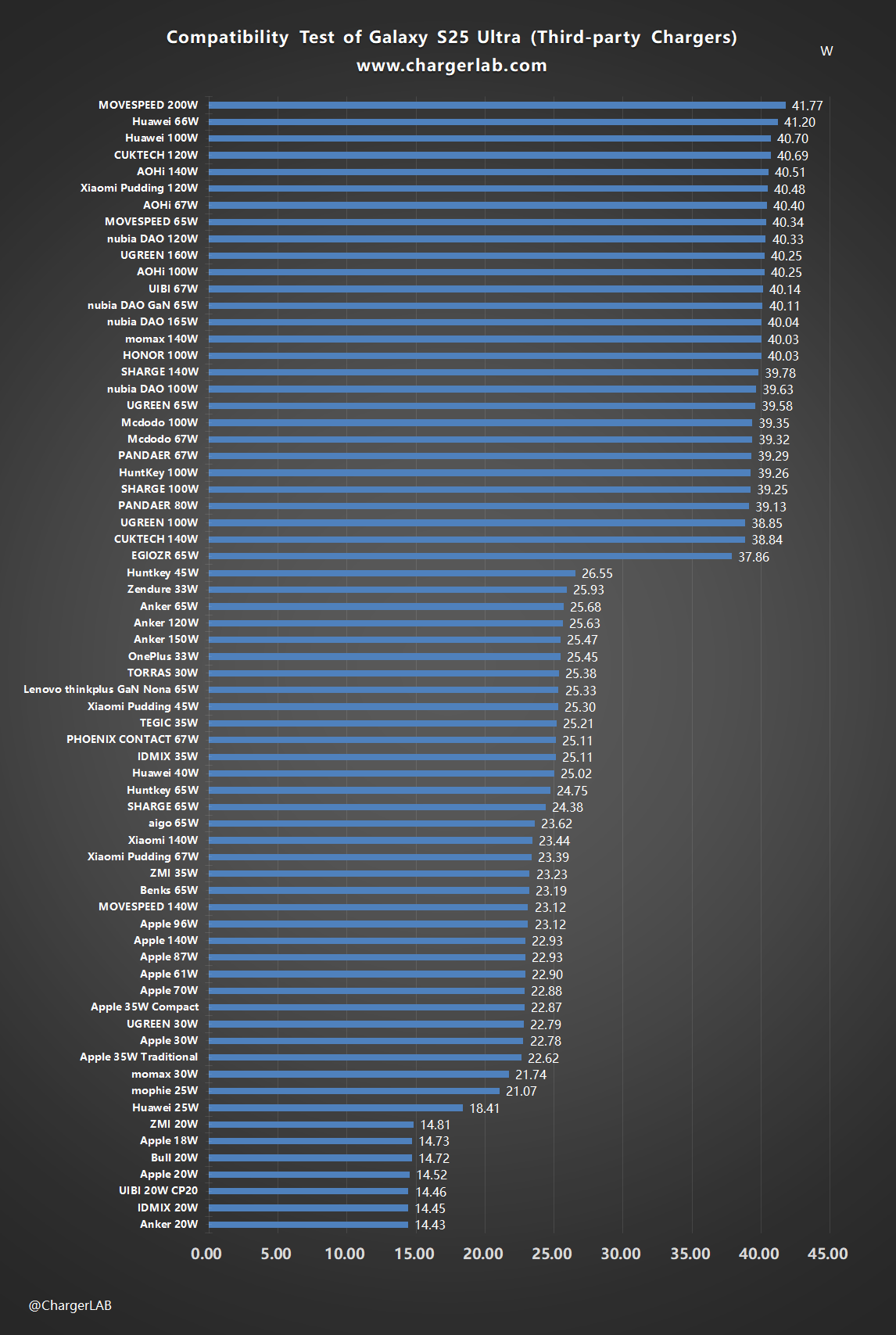
Further visualization in a bar chart shows that most third-party chargers provided over 20W of power. Chargers delivering less than 20W typically had lower rated power themselves. For chargers supporting the PD fast-charging protocol, the power output was generally around 23W, while those supporting the PPS fast-charging protocol achieved higher outputs, ranging between 25W and 41W, with the highest reaching 41.77W. Overall, compatibility was excellent.
Power Banks
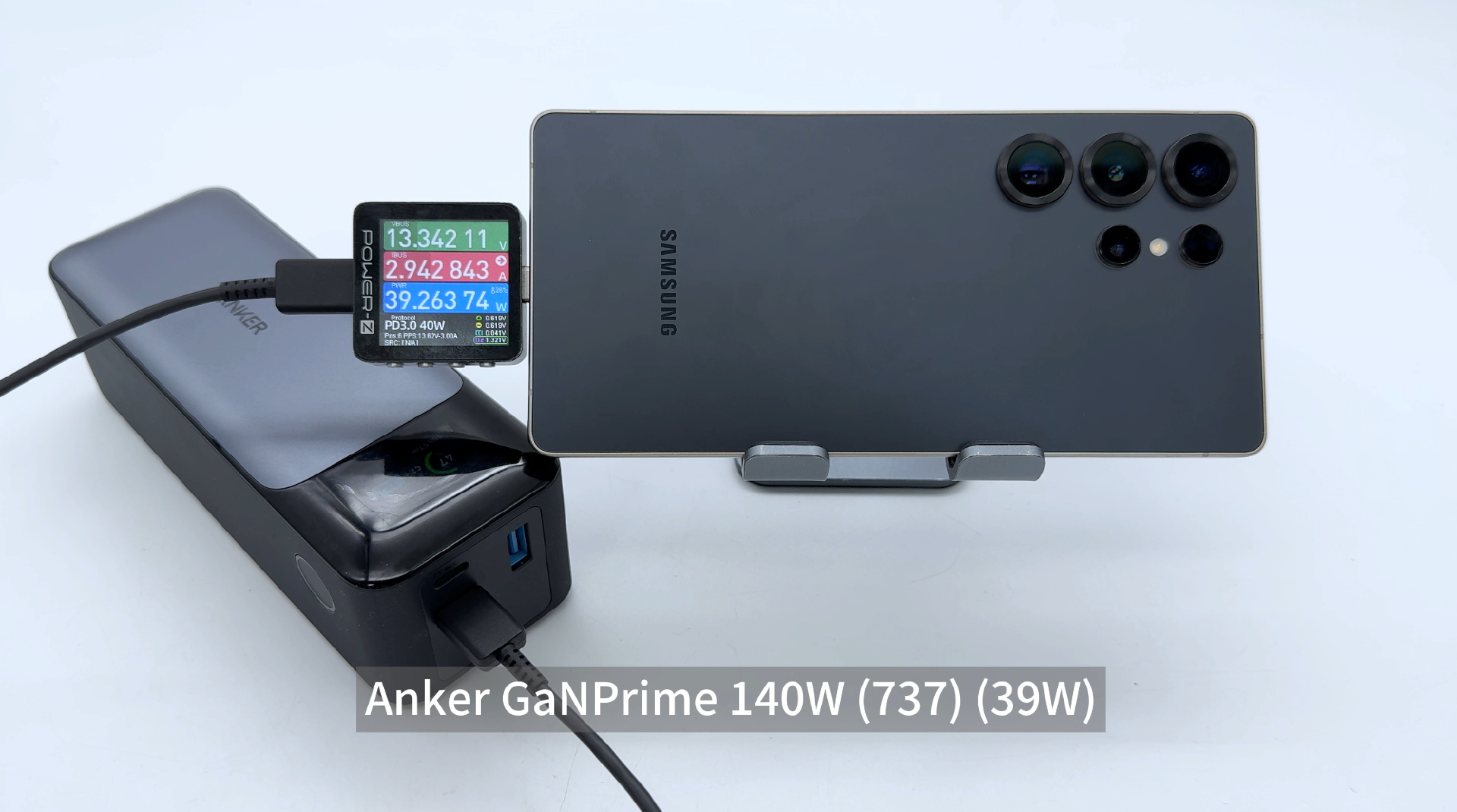
Finally, we tested power banks. Using the Anker GaNPrime 140W (737) to charge the phone, the measured input power was approximately 13.34V 2.94A 39.26W.
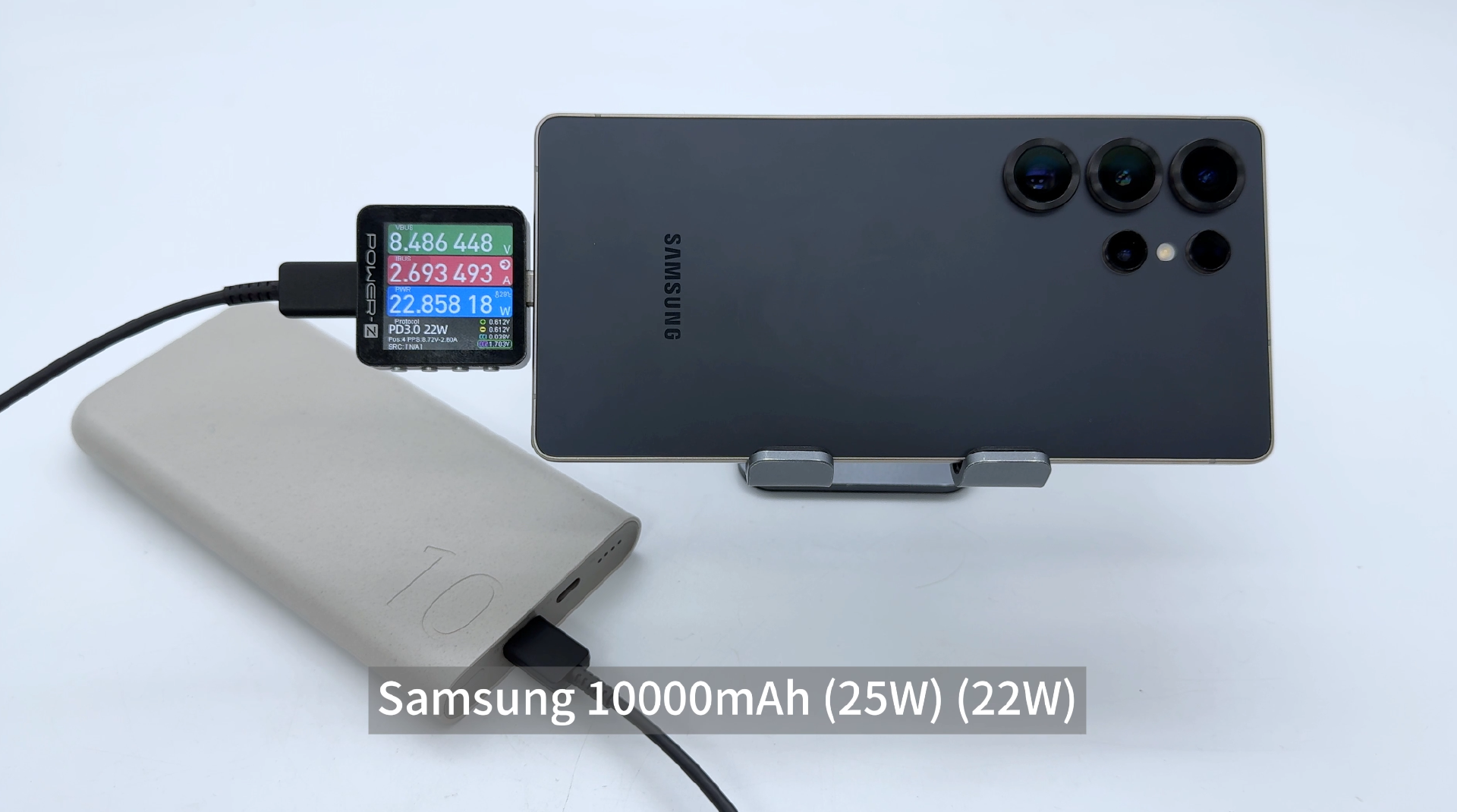
Samsung’s own 10,000mAh (25W) power bank delivered around 8.49V 2.69A 22.86W.
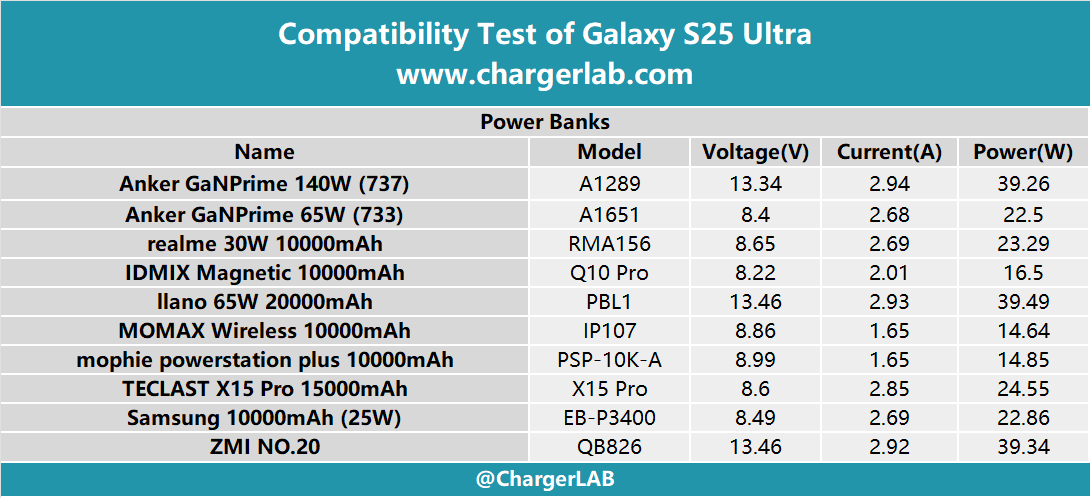
In power bank tests, most units triggered a 9V voltage. However, power banks supporting high-power PPS were able to trigger a 13V voltage, resulting in higher overall power output.
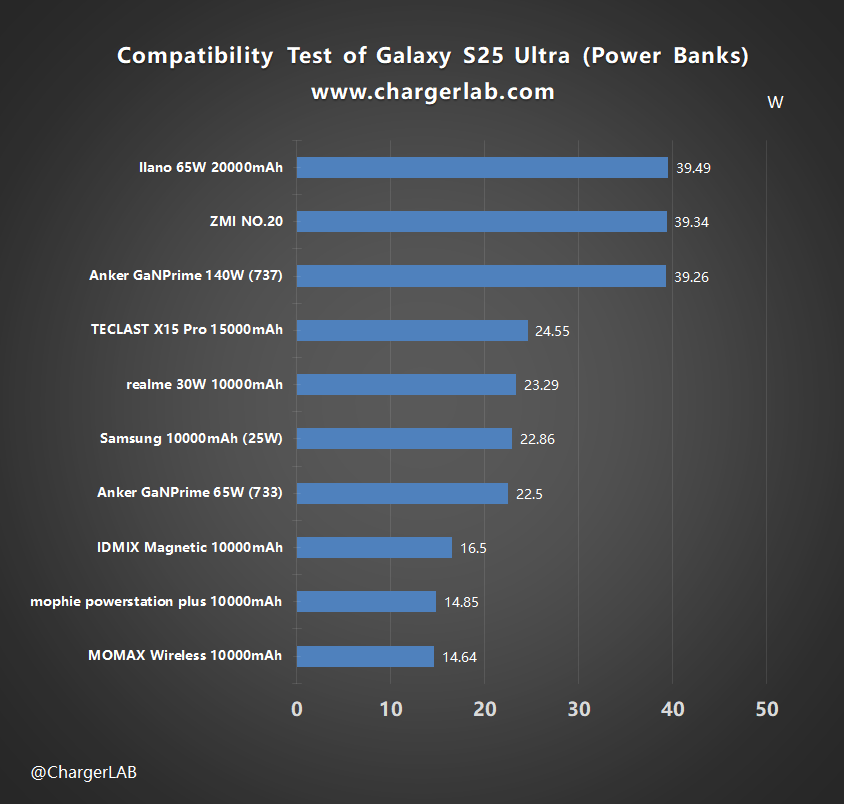
The bar chart clearly illustrates the power distribution of each power bank. Three models reached around 39W: the llano 65W 20,000mAh, the ZMI No. 20, and the Anker GaNPrime 140W power bank. Other power banks mostly fell into two power tiers—23W and 15W.
Summary of ChargerLAB
The Samsung S25 Ultra features a 5000mAh battery and supports 45W fast charging. Compared to its predecessor, the S25 Ultra adopts a high-voltage, low-current charging strategy (similar to the iPhone 16 series). However, its compatibility with original, third-party chargers and power banks remains similar to the previous generation.
Original chargers rated at 45W or higher, as well as high-power PPS third-party chargers, consistently triggered a voltage of 13-14V, with peak power reaching around 41W. Most other third-party chargers also delivered over 20W.
Additionally, power bank tests showed that several high-power PPS-supported models reached 40W, maintaining overall charging ecosystem compatibility with the previous generation. While peak power is slightly lower than before, users can still enjoy efficient power replenishment across different scenarios.
Related Articles:
1. Charging Review of Samsung S24 Ultra
2. 45W | Compatibility Test of Samsung Galaxy S24 Ultra
3. Charging Compatibility Test of Samsung S23+

